Research
Machine Learning and Earthquakes
Earthquake Rupture Dynamics
Stick-Slip in Amorphous Materials
Statistics of Great Earthquakes
Nonlinear Elastic Properties of Rocks
Dynamic Earthquake Triggering
Modeling Tectonic Tremor
-
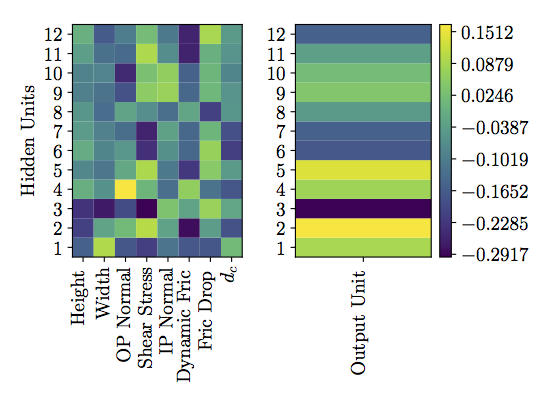
Machine Learning and Earthquakes
Recent advances in instrumentation have dramaticaly increased the amount of data available to earth scientists. New techniques based on machine learning combined with these datasets provide a novel way to learn about earthquake processes that was not possible previously. Our group is working on applying machine learning in several ways. We are using neural networks, combined with large computational datasets of rupture propagation and arrest (see Earthquake Rupture Dynamics), to better understand how fault geometry, stress, and friction combine to control the complex physics of earthquake rupture. We are also applying machine learning methods for parameter estimation to determine if present seismicity in the New Madrid Seismic Zone might be aftershock activity from the historical 1811-1812 earthquakes. -
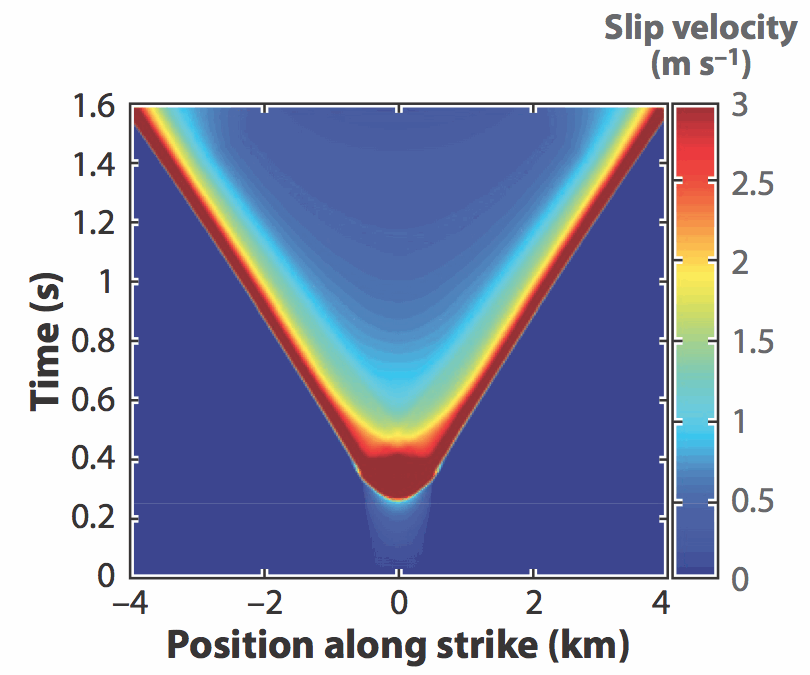
Earthquake Rupture Dynamics
Seismologists do not have a complete understanding of the physical processes involved in earthquake rupture. Seismic hazard worldwide is not well constrained because large earthquakes do not occur frequently, and thus there are large uncertainties in both how frequently earthquakes occur and what the resulting ground motions will be when they do occur. To put better physical constraints on earthquake hazard, our group studies dynamic earthquake rupture using numerical simulations. We are primarily interested how to represent the physical processes controlling fault slip into physically motivated friction laws, and then understanding how these friction laws impact ground motion at the scale of faults. Much of our research has focused on the physics of shear strain localization in the granular materials that are found at fault interfaces, and showing how accounting for strain localization affects the propagation of earthquakes in space and time.More information on earthquake rupture dynamics can be found in our papers here, here, here, and here.
-
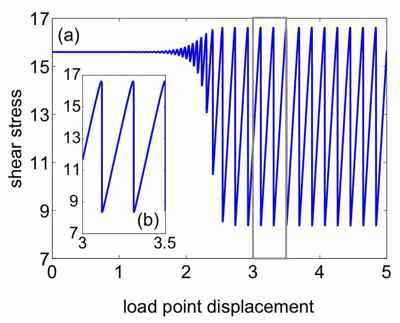
Stick-Slip in Amorphous Materials
Scientists do not understand how disordered amorphous materials, such as granular, glassy, and colloidal systems deform and fail. This is an important question for both seismologists, physicists and engineers, as a large number of common, everyday materials fall into this category. We have focused on understanding how amorphous materials can exhibit stick-slip instabilities in their deformation behavior, where instead of deforming steadily, the system undergoes intermittent periods of slow elastic deformation followed by rapid failure. We have used Shear Transformation Zone Theory to examine the dynamics of stick-slip, and in particular focused on stick-slip behavior of bulk metallic glasses. STZ Theory can capture the full range of deformation behavior observed in laboratory experiments with metallic glasses, and our work aims to further develop theories of plastic deformation in amorphous materials with predictive power.More information on stick-slip in amorphous materials can be found in our papers here, here, and here.
-
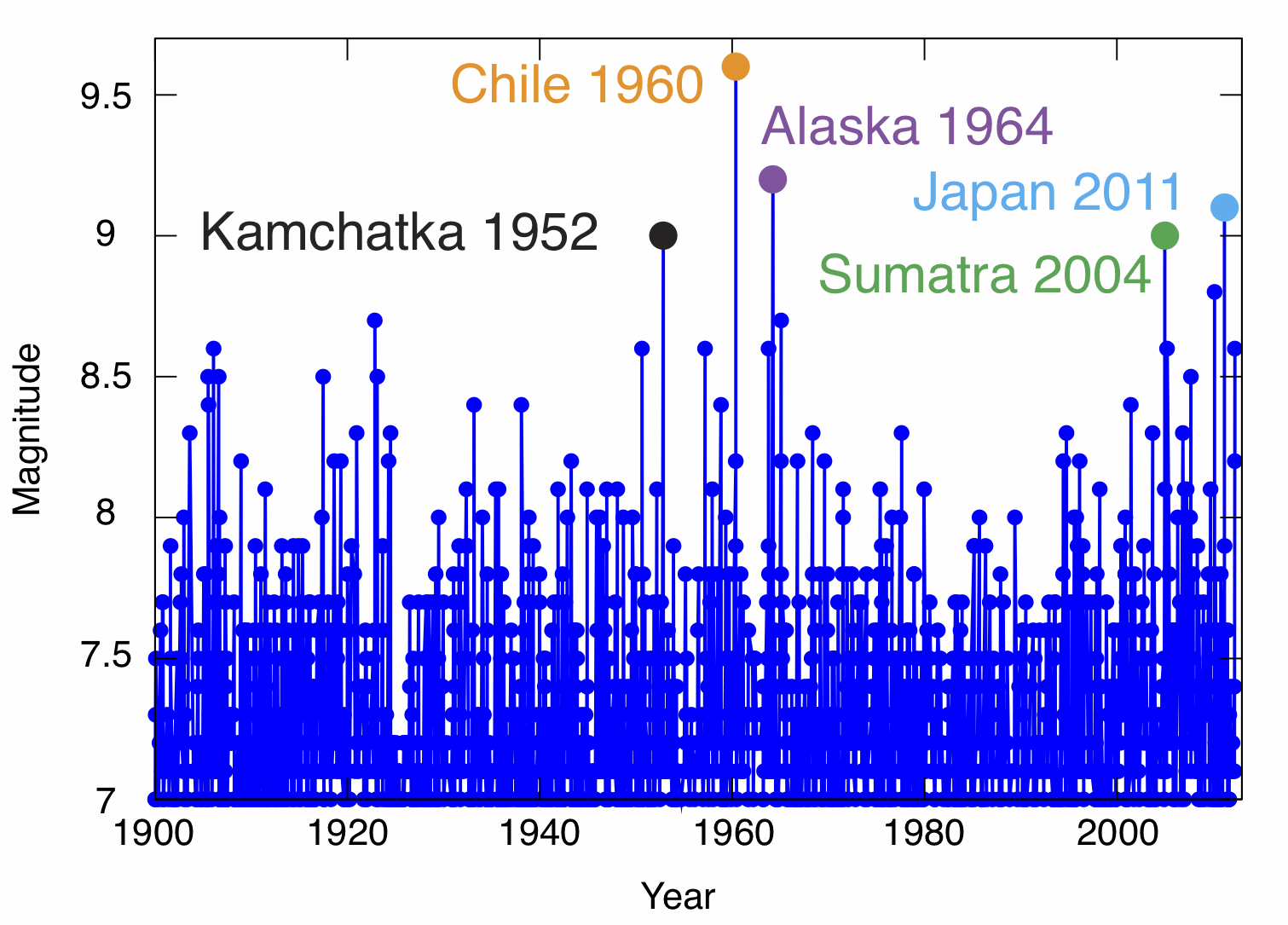
Statistics of Great Earthquakes
In the last 10 years there have been several large earthquakes, events whose magnitudes rank among the largest that scientists have recorded. This has led to speculation that the largest earthquakes cluster in time. We have investigated the statistics of the global earthquake record to examine if earthquake occurrence deviates from a process that is random in time. Our work shows that in general, the global earthquake record matches well with the expected statistics for a random process, but that there are also some interesting, yet inconclusive, deviations from random behavior. Ultimately, the earthquake record is very short, and thus it is difficult to determine with any certainty whether earthquake occurrence is random or not.More information on the statistics of great earthquakes can be found in papers here, here, and here.
-
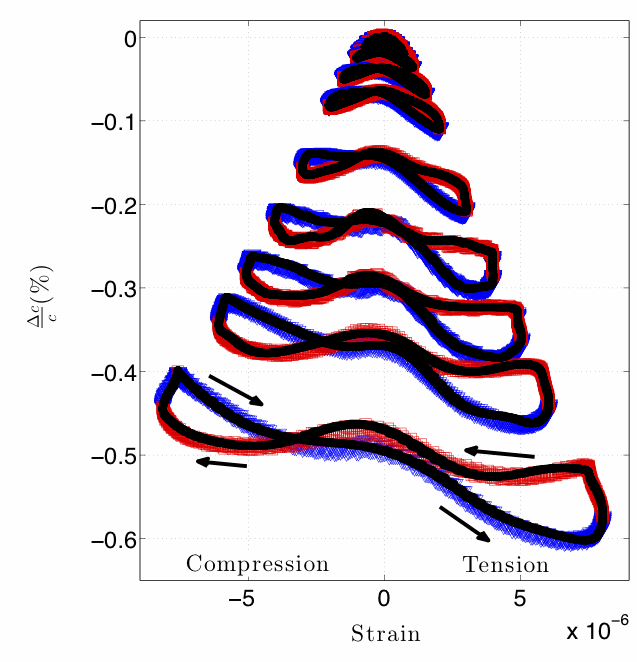
Nonlinear Elastic Properties of Rocks
In order to infer properties of rocks in the earth, seismologists rely on observations of seismic wave propagation speeds. However, these wave velocities can change with time as the stresses and strains of faulting are constantly evolving. Thus, in order to interpret seismic observations, it is important to understand how wave velocity changes in the earth. Our group is interested in understanding this problem of the nonlinear elastic properties of rocks from a microscopic physical standpoint, as the underlying physics of nonlinear wave speed changes are not well constrained. In particular, we are interested in modeling both quasistatic and dynamic effects -- that is, whether there is a DC (quasistatic) or an AC (dynamic) stress or strain applied to the rock -- that are observed in various laboratory experiments. We are also interested in how to measure these temporal changes in wave speed in the earth through ambient noise monitoring techniques.More information on nonlinear elasticity can be found in our papers here, here, here, and here.
-
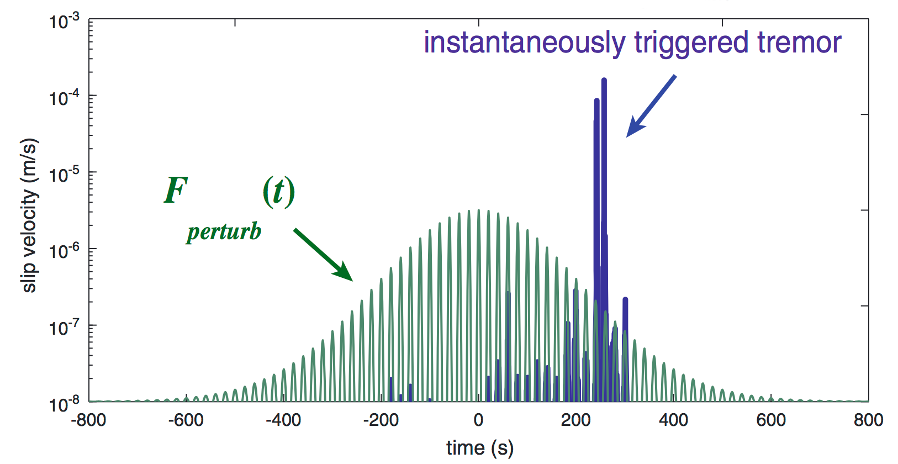
Dynamic Earthquake Triggering
Earthquakes can cause other earthquakes, both over short distances (known as aftershocks) and long distances, where the seismic waves of one earthquake can destabilize a fault at a great distance and trigger additional earthquakes dynamically. The process by which dynamic waves destabilize faults remains an open question. Our group is interested in understanding the physical mechanisms behind dynamic triggering, and we have conducted exeriments, numerical simulations, and frictional modeling to pursue this question. Our discrete element simulations show that dynamic shaking destabilizes frictional contacts in a sheared granular material, triggering early slip, and that a friction model that captures this behavior predicts both instantaneous and delayed triggering of tectonic tremor. This helps us better understand how all earthquakes, both those that are triggered and those that are not triggered, initiate and lead to rapid slip and failure.More information on earthquake triggering can be found in our papers here, here, here, here, here, and here.
-
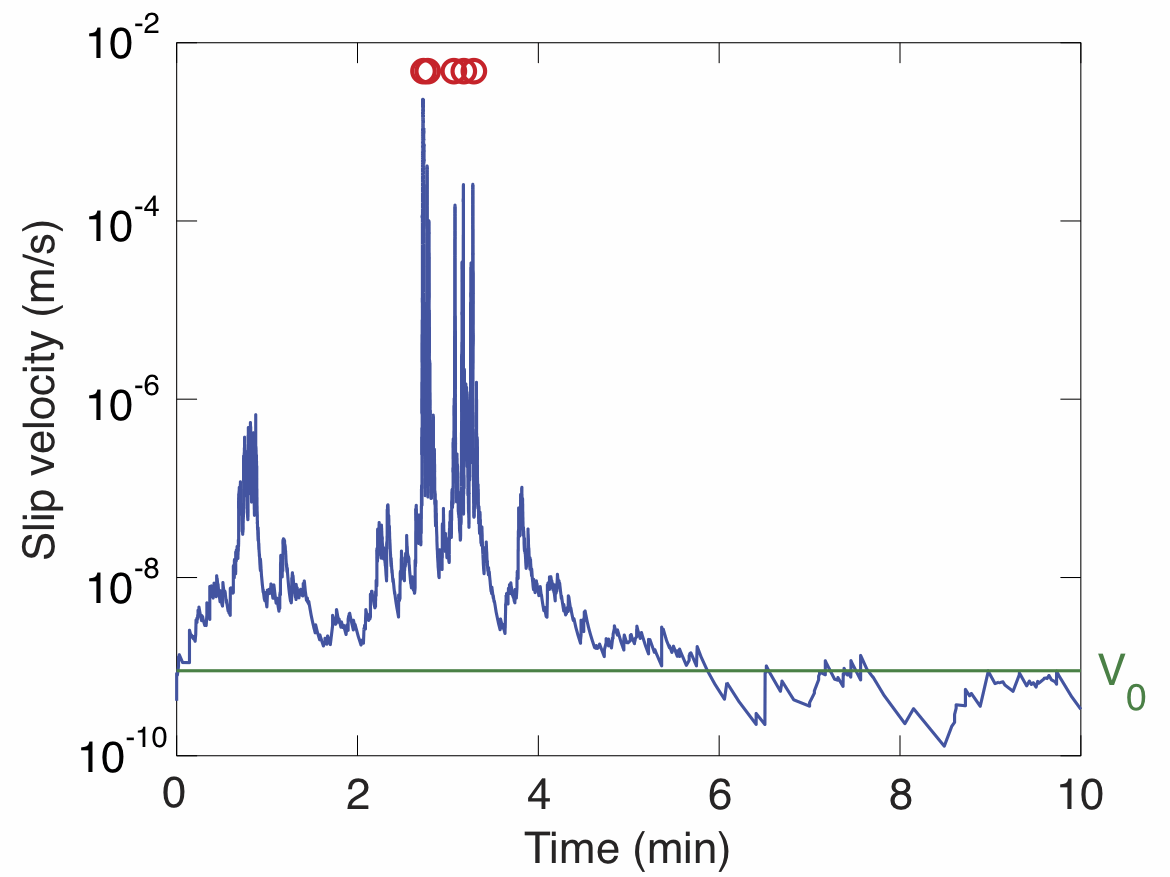
Modeling Tectonic Tremor
Recent observations show that the deep part of earthquake faults worldwide produce small earthquakes, known as tectonic tremor. These events exhibit several distinct characteristics from traditional earthquakes, including "burst-like" behavior where several events originating on the same fault patch occur in a short time period, followed by several days of no activity. However, these events occur much more frequently than traditional earthquakes, and allows seismologists to compile an extensive catalog of tremor occurrence in a short time period. Our group has developed a physical model for tremor, where a mix of brittle and ductile friction behaviors combine to produce the burst-like behavior oberved in the earth. The extensive tremor catalog derived from the Parkfield section of the San Andreas Fault allows us to constrain the frictional parameters in our model, and lends insight into the physical nature of deformation and failure deep in the crust.For more on tectonic tremor modeling, see our papers here, here, and here.
